It seems every frontier town throughout the United States has its own story of settlers being massacred due to the Native Americans not taking kindly to their encroachment. The Whitman Massacre is one of those unfortunate stories.
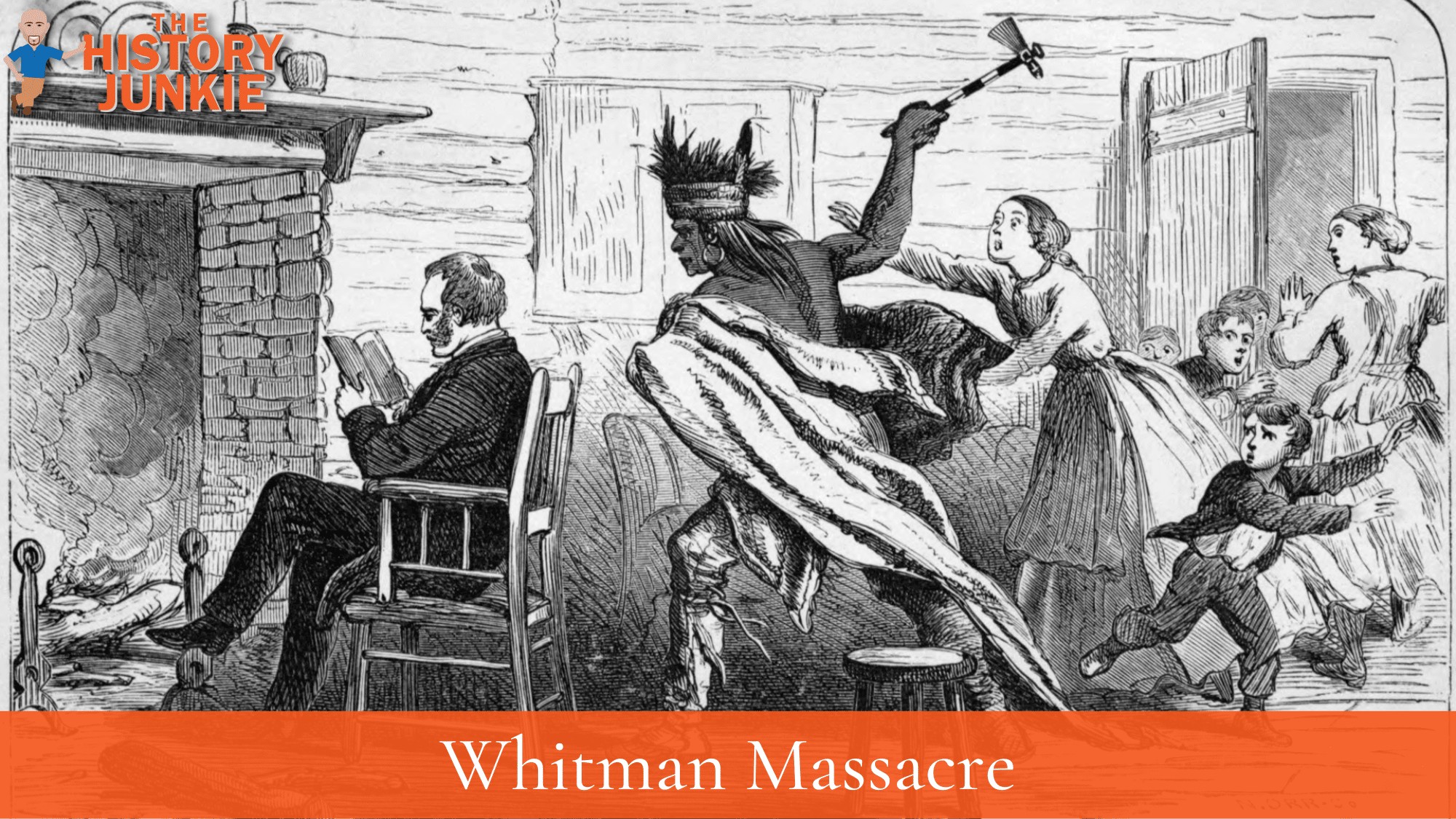
Marcus and Narcissa Whitman were Christian missionaries who did not pose any threat to the natives; however, when a measles outbreak occurred, it would cost them their lives.
Jump to:
- #1. The Whitmans Founded Their Mission In 1836
- #2. The Indians Were Used To Communal Life While The Whitmans Wanted Privacy
- #3. Ongoing Migration and Encroachment Caused Alarm Among The Natives
- #5. Measles Spread Throughout The Tribe
- #5. The Whitman Massacre Occurs Late November 1847
- #6. The Natives Captured The Survivors Of The Whitman Massacre
- #7. The Whitman Massacre Resulted In A War
- #8. The Whitman Massacre Propelled Oregon into Statehood
#1. The Whitmans Founded Their Mission In 1836
When Marcus Whitman arrived in the area that was owned by the Cayuse Tribe and initiated contact, it seemed that the two groups may get along. Relations began cordially but would run into frustrations quickly.
A language barrier hurt their communications, and at the time, the Cayuse tribe was used to dealing in trade with beaver pelts, which the Whitmans were not all that interested in. The tribe also did not find the supplies the Whitmans brought to be of much value to them either.
The mission was to not only convert the tribe to Christianity but also to influence the tribe to adopt the American way of farming. They believed if the Native Americans adopted the American way of life, it would be easier for them to blend into American society.
#2. The Indians Were Used To Communal Life While The Whitmans Wanted Privacy
One of the first clashes that the two groups had with each other was their style of living. The Native Americans within the area practiced communal living, while the Whitmans preferred privacy.
Most people today would live like the Whitmans. When you build a house, you do not expect someone to freely walk in without knocking or letting you know ahead of time. The Natives would not only come over unannounced but would often show up and just walk into the house.
This especially bothered Narcissa who the tribe viewed as haughty. She commented on how dirty the natives were and the mess they left behind. While it may not seem like something to kill someone over, which it wasn't, it did provide much discomfort.
#3. Ongoing Migration and Encroachment Caused Alarm Among The Natives
The Cayuse watched with alarm as more and more emigrants traveled through their country, using up scarce firewood, depleting grasses on land used to graze Indian horses and cattle, and killing game without permission.
About 1,500 arrived in 1844; twice that number came the next year.
Many exhausted families wintered at the mission before continuing on to the Willamette Valley in the spring. More outbuildings were added to the mission complex, more fields were fenced in.
Narcissa wrote:
The Indians are roused a good deal at seeing so many emigrants
The encroachment caused many of the natives to push for the Whitmans to leave the area, which they refused. Tensions began to rise during this time.
#5. Measles Spread Throughout The Tribe
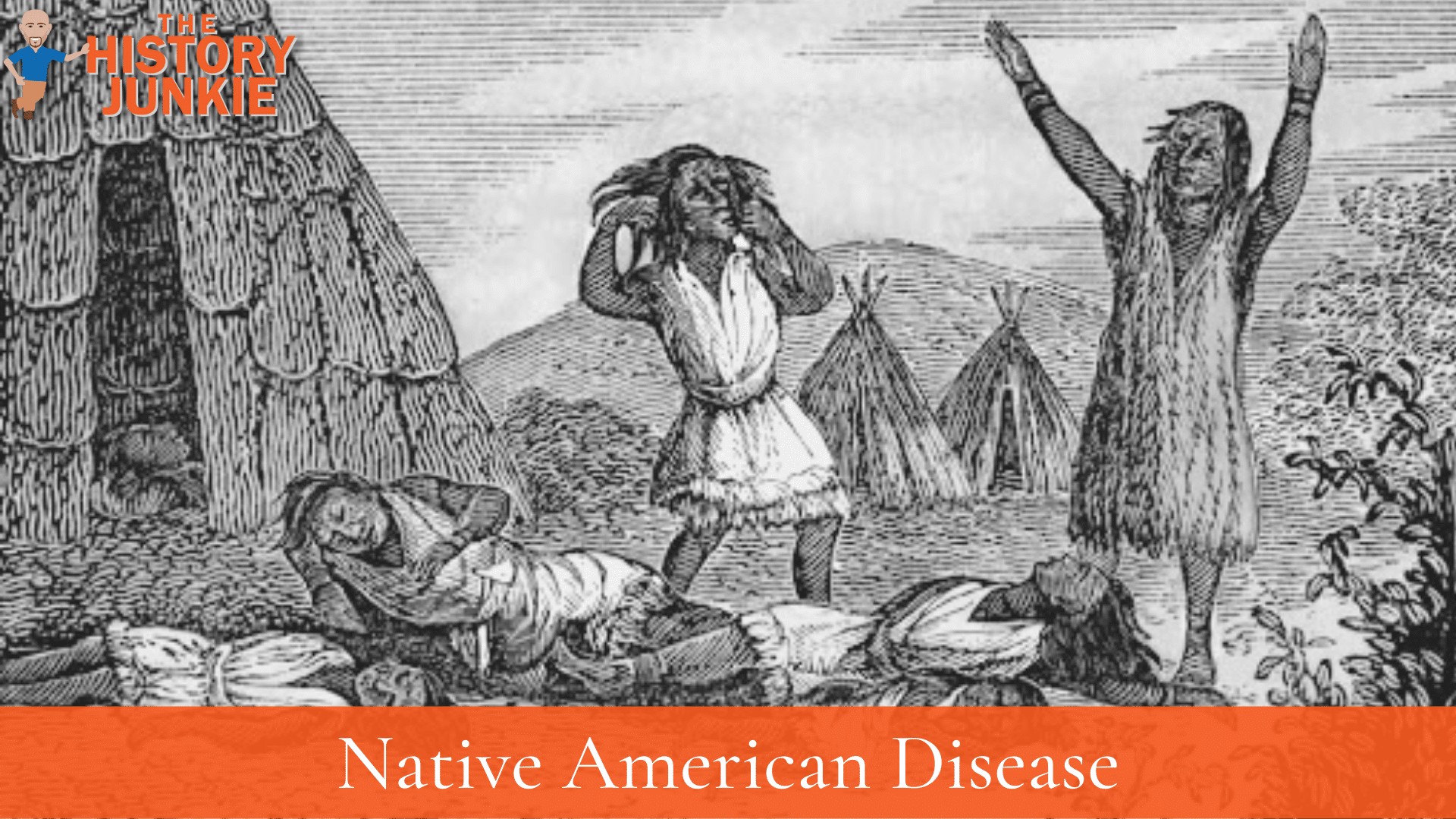
Native Americans were susceptible to diseases brought to them by the white man since they first arrived with Columbus. They did not have the immunity to combat these sicknesses. However, measles also killed the settlers as well.
More than 4,000 settlers reached Oregon Country in 1847. Their arrival coincided with a virulent epidemic of measles among the Cayuses, who had no natural immunity to the infectious diseases introduced by Americans.
The source of the outbreak is not clear: possibly one of the emigrant wagon trains, possibly a Cayuse-Walla Walla cattle-trading party that had recently returned from California.
In any case, the effects were devastating. According to some estimates, nearly half the Indians living near the Whitman Mission died. More than a dozen white people at the mission also were sickened by measles, but only one - a six-year-old from an emigrant family - died.
Noting that Whitman's white patients usually recovered while his Indian patients did not, some Indians began to suspect him of deliberately killing Cayuses in order to take their land.
In Cayuse tradition, a healer or shaman whose patients died could be considered guilty of misusing his spirit power and put to death himself.
Whitman, a medical doctor who had been introduced to the Cayuses as "a sorcerer of great power," was well aware of his vulnerability. Just months after settling in at Waiilatpu, he had been called to treat the wife of a Cayuse head chief.
The chief told Whitman he would kill him if his wife died. Some patients survived, but others did not. In a letter to the American Board in 1845, Whitman noted that he had recently been accused of causing two deaths - one, a young man who "died of apoplexy," and the other, a chief.
The chief's son "came to me as he was dying and in a passion told me I had killed his Father and that it would not be a difficult matter for me to be killed"
This would set the stage for what followed
#5. The Whitman Massacre Occurs Late November 1847
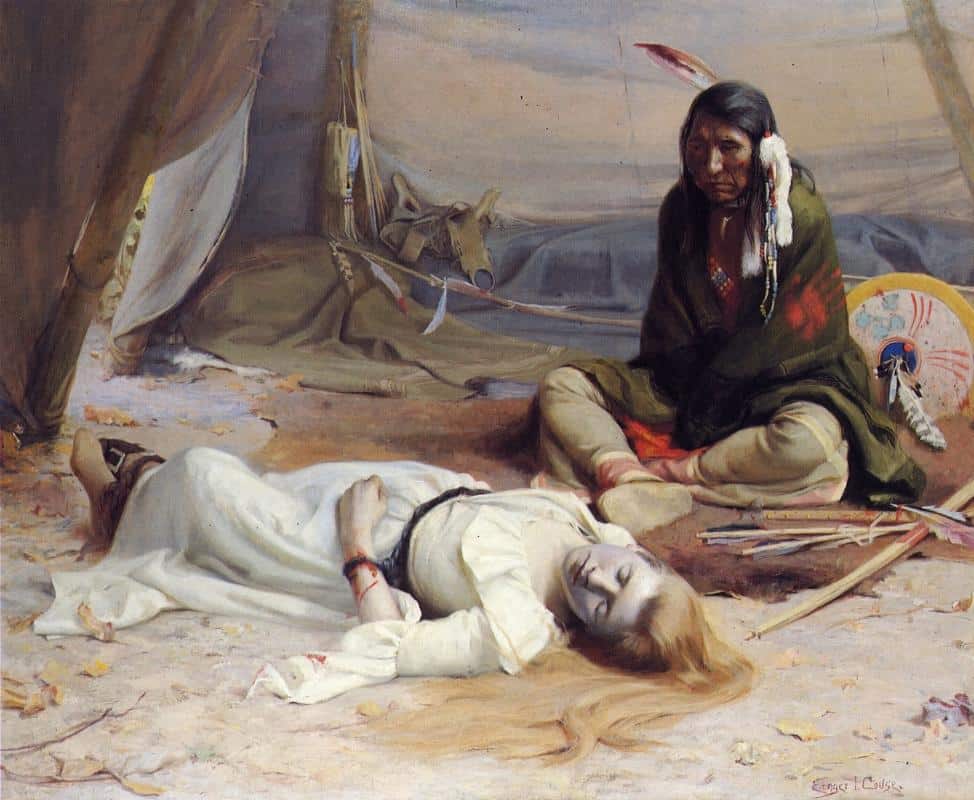
More than 60 people were at the Whitman Mission on the morning of November 29, 1847, including eight newly arrived emigrant families, a school teacher, a tailor who had been hired to make a new Sunday suit for Whitman, half a dozen laborers, and 10 children who had been taken in by the Whitmans over the years (among them seven orphans whose parents - Henry and Naomi Sager - had died on the Oregon Trail in 1844).
Two other families were living in a cabin at the mission's sawmill in the Blue Mountains, some 20 miles away. It was a cold and foggy day. After the noontime meal, several of the men began butchering a steer.
Some of the children went to the schoolroom, on the second floor of the main Mission House, with their teacher. Narcissa gave two of the Sager girls a bath downstairs. Whitman sat down in the living room to read.
Sometime after 1 p.m., a small group of Cayuses - 14 to 18, by most estimates - armed themselves with clubs, tomahawks, and guns, covered the weapons with blankets, and went to the mission complex.
Two Indians pushed their way into the kitchen at the Mission House and demanded medicine. Roused by the noise, Whitman went to the kitchen.
Mary Ann Bridger, a 12-year-old mixed-race daughter of mountain man James F. "Jim" Bridger, who had spent half her life with the Whitmans, was the only eyewitness to what happened next.
She said later that when Whitman turned toward a cupboard, presumably to get some medicine, one of the Indians plunged a tomahawk into the back of his head.
Tribal historians speculate that the assailant may have been trying to release the evil spirits he thought lay within.
By sunset, some four hours later, nine people were dead, including both Whitmans. Narcissa, the only woman to be attacked, was shot.
#6. The Natives Captured The Survivors Of The Whitman Massacre
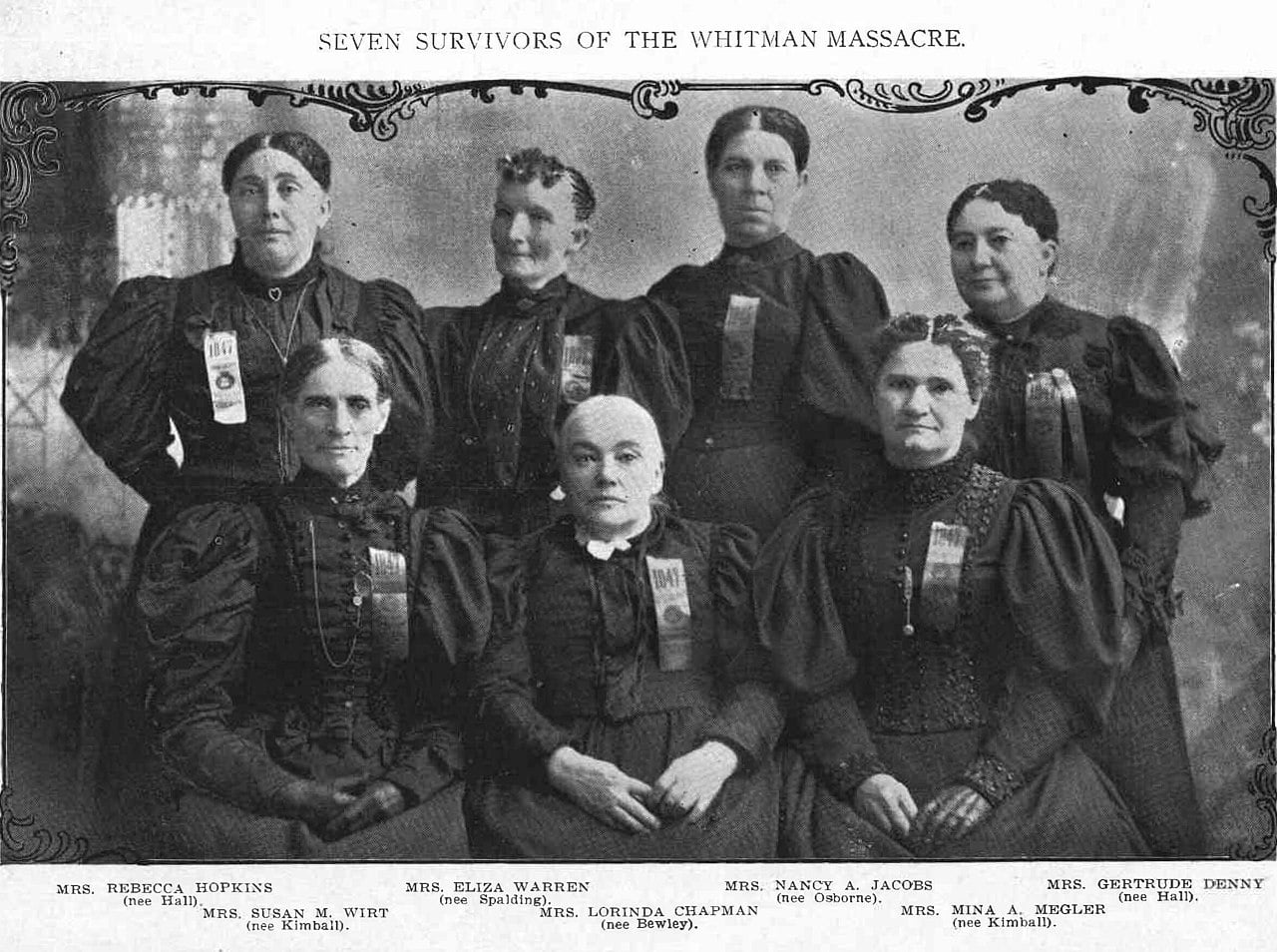
The survivors - mostly women and children - were held as hostages for a month and then ransomed by Peter Skene Ogden, a Hudson's Bay Company official from Fort Vancouver.
Shortly after Odgen and his men left to escort the former captives to Fort Vancouver, the Indians learned that settlers in the Willamette Valley had destroyed Cayuse villages and property on the upper Deschutes River.
Angered, they returned to the mission, piled wagons and other property into the buildings, and burned them.
The settlers' reactions to the "horrid massacre" at Waiilatpu were reflected in the pages of the Oregon Spectator, published in Oregon City.
One editorial demanded that "the barbarian murderers ... be pursued with unrelenting hostility until their lifeblood has atoned for their infamous deeds; let them be hunted as beasts of prey".
George Abernethy, recently elected as the provisional governor, called for "immediate and prompt action" to punish the perpetrators.
A volunteer militia of about 500, led by Colonel Cornelius Gilliam, set out to do that in January 1848.
#7. The Whitman Massacre Resulted In A War
The settlers became enraged over what had occurred to the Whitmans and immediately raised a volunteer force and began harassing the Cayuse Tribe.
This went on for a year and drained the tribe of their resources. The tribe and the settlers began to negotiate, and eventually, it was decided that the tribe would hand over the five who were guilty of this heinous act.
They handed over five Cayuse, who were then tried and hanged for their hand in the murders.
#8. The Whitman Massacre Propelled Oregon into Statehood
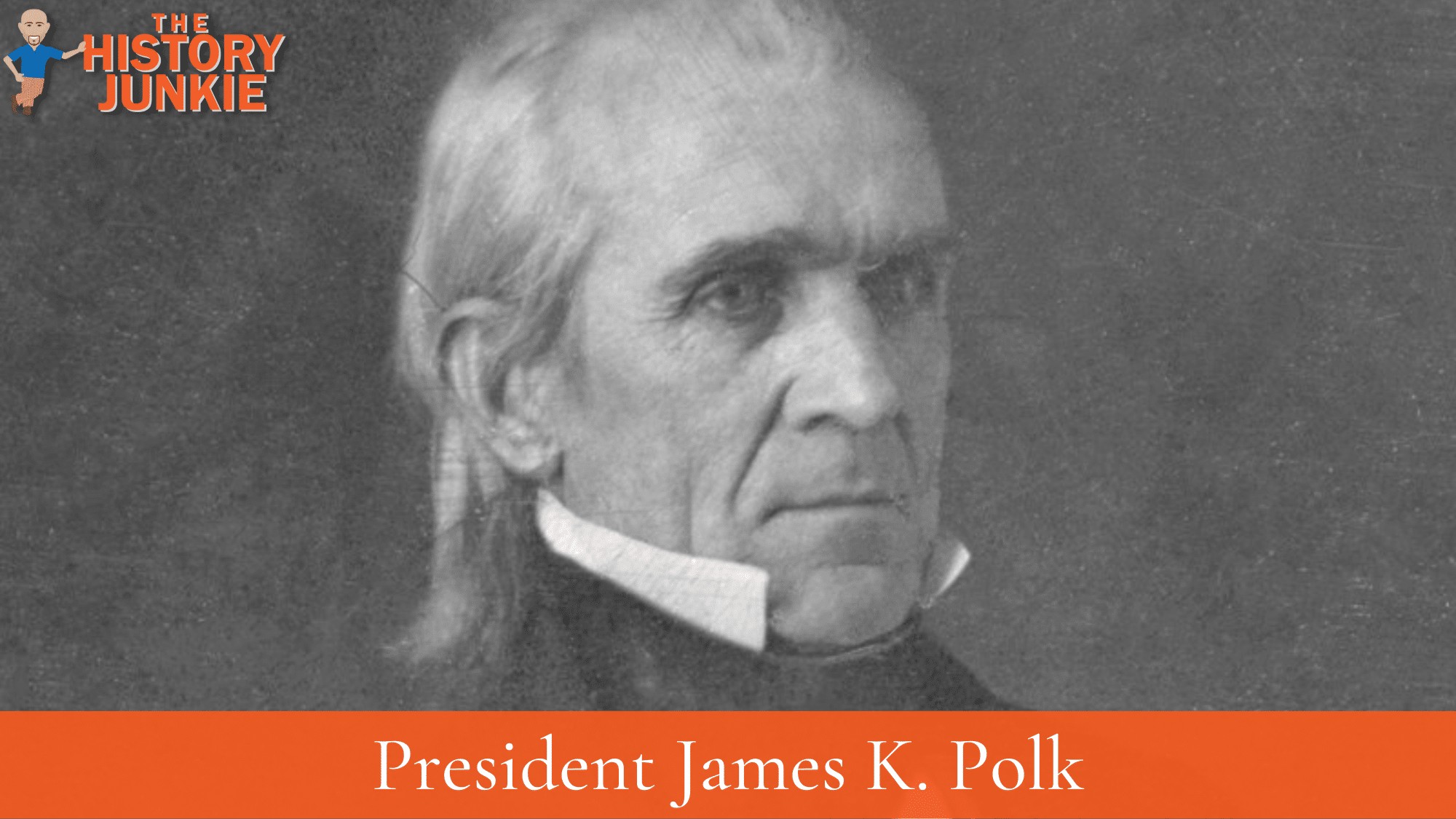
Well,...not statehood, but President James Polk did make it a territory that gave it federal protection. The expansionist president desired this because it would help keep the balance between slave states and free states while also claiming more land for the country.
President James Polk signed the measure in August 1848. He then appointed the first slate of territorial officers, including Joseph Lane, a Mexican War veteran from Indiana, as territorial governor, and Meek as U.S. Marshal.
